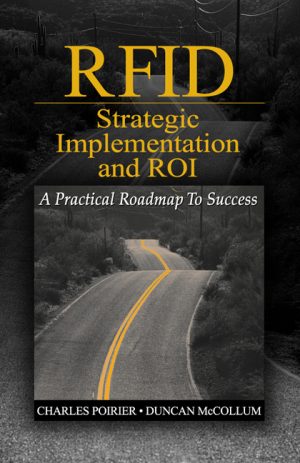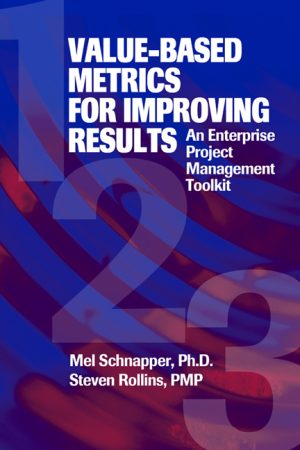Bristol Bay Alaska
$84.95
Natural Resources of the Aquatic and Terrestrial Ecosystems
Edited by Carol Ann Woody
Hardcover, 8.5×11, 604 pages
ISBN: 978-1-60427-103-4
March 2018
Description
Bristol Bay, Alaska, supports a wide diversity of globally significant natural resources—from the world’s most valuable wild salmon fishery to one of the world’s largest untapped copper deposits. With contributions from leading scientific experts, this comprehensive, one-of-a-kind book is essential to understanding what is known regarding the extraordinary array of natural resources found within the Bristol Bay ecosystem. This reference will aid policy makers, resource managers, scientists, stakeholders, students, and the public in the discussion, debate, and decision making surrounding the future of this world treasure.
Key Features
- First-ever comprehensive book on the natural resources of Bristol Bay and its watershed
- Wonderfully organized book that takes the reader on a wide-ranging journey through this remarkable region of the world with 26 chapters written by expert scientists in their respective fields
- Contains appendices on marine invertebrates as well as freshwater macroinvertebrates and diatom communities
- Provides cutting-edge information on salmon diversity and genetics and seldom seen information on the fresh water seal populations
- Features over 200 full color illustrations and photos and more than 50 research tables, with many chapters including summaries and future recommended research by the scientist authors
- WAV features material on the North Aleutian Basin oil and gas potential—available from the Web Added Value™ Download Resource Center
About the author(s)
Carol Ann Woody has been adventuring, researching, teaching and living in Alaska since 1988. She became fascinated with Bristol Bay in 1993 when, clad in a leaky dry suit, she spent a chilly summer floating around North America’s largest sockeye salmon nursery (Iliamna Lake) surrounded by ruby red spawning sockeye, studying their behavior for the University of Washington (UW). She went on to earn her Ph.D. in Fisheries Science from UW. She also holds an M.S. in biology from the University of Wisconsin and a B.S. in Wildlife and Fisheries Management from Utah State University.
Carol Ann served almost 20 years as a federal scientist for the U.S. Fish and Wildlife Service, the U.S. Forest Service, the U.S. Geological Survey (USGS), and, most recently, the National Park Service. During her four years on the 17 million-acre Tongass National Forest in southeast Alaska, she and her teams earned multiple awards for exceptional productivity and meritorious service. While a fisheries research biologist with USGS, she earned multiple awards for exceptional research productivity in population status and trends, ecology, genetics and evolution. She also received a meritorious service award for acting as the nation’s USGS Director of Fisheries.
Carol Ann has academic affiliations with the University of Alaska, University of Idaho, and University of Montana, mentoring graduate and undergraduate students and sparking interest in fisheries and environmental science through courses and research internships. In 2016 and 2017, the Alaska Native Science & Engineering Program honored her for creating systematic change in the hiring patterns of Indigenous Americans in the fields of science, technology, engineering, and mathematics.
Embracing the responsibility of a scientist to translate and communicate scientific findings and their implications to all interested parties—peers, resource managers, tribes, decision managers, policy makers, stakeholders, and the public—has led Carol Ann to become an expert fisheries advisor to diverse groups including indigenous tribes, the World Wildlife Fund, Patagonia Inc.’s Wild Salmon Advisory Team, and Alaska Governor Walker’s Fisheries Transition Team. She is a Past President of the Alaska Chapter of the American Fisheries Society (AFS) and served on the Western Division Environmental Concerns Committee and Endangered Species Committee of AFS. She is the first woman to receive one of the American Fishery Society’s highest honors—the President’s Fishery Conservation Award (2017).
She has published more than 20 peer reviewed articles; numerous technical reports; edited two books; prepared policy and law articles, including an amicus brief for the U.S. Supreme Court; served as an expert witness for various court cases; been an invited speaker on three continents; given innumerable talks; and led discussion panels and workshops on Bristol Bay fisheries. Carol Ann currently works as the Regional Fish Biologist for the National Park Service in Anchorage, Alaska.
Table of Contents
Section I. The People and the Land of Bristol Bay, Alaska
Chapter 1: The Indigenous Salmon Cultures of the Bristol Bay Watershed. Alan S. Boraas and Catherine H. Knott
Chapter 2: Vegetation of the Bristol Bay Watershed. Matthew L. Carlson, Lindsey A. Flagstad, Tina V. Boucher, Keith Boggs, and Amy E. Miller
Chapter 3: Flora of the Bristol Bay Watershed. Matthew L. Carlson and Brian Heitz
Chapter 4: National Parks in Bristol Bay, Alaska. Robert A. Winfree
Chapter 5: National Wildlife Refuges of Bristol Bay. Stephanie Kuhns
Chapter 6: Wood-Tikchik State Park. Tim Troll and Daniel E. Schindler
Section II. Wildlife Resources of Bristol Bay: Terrestrial Systems
Chapter 7: Brown Bears. Colleen A. Matt and Lowell H. Suring
Chapter 8: Moose. Lori Verbrugge and Phil Brna
Chapter 9: Barren Ground Caribou. Kenneth Whitten
Chapter 10: The Grey Wolf. Lori A. Verbrugge, Ashley Stanek, and Buck Mangipane
Chapter 11: Shorebirds of Bristol Bay. Susan Savage
Chapter 12: Bald Eagles. Lowell H. Suring and Maureen de Zeeuw
Section III. Wildlife Resources of Bristol Bay: Marine Systems
Chapter 13: Cetaceans of Bristol Bay. Kim Shelden and Janice Waite
Chapter 14: Pinnipeds of Bristol Bay. Anne Hoover-Miller
Chapter 15: The Importance of Bristol Bay to Marine Birds of the World. Nils Warnock and Melanie Smith
Section IV. Marine Ecology and Fisheries of Bristol Bay
Chapter 16: Essential Fish Habitat and Estuarine Processes of Bristol Bay. Doug Limpinsel and Robert McConnaughey
Chapter 17: Marine Invertebrates of Bristol Bay. W. Stewart Grant, Aaron Baldwin, and Todd A. Radenbaugh
Chapter 18: Salmon Resources and Fisheries. Daniel Rinella, Rebecca Shaftel, and Dave Athons
Section V. Freshwater Ecology and Fisheries of Bristol Bay
Chapter 19: Freshwater Environments – Water Quality of the Nushagak and Kvichak Watersheds. Kendra Zamzow
Chapter 20: Macroinvertebrate and Diatom Communities in Headwater Streams of the Kvichak and Nushagak River Watersheds, Bristol Bay, Alaska. Daniel Bogan, Daniel Rinella, Rebecca Shaftel, and Dustin Merrigan
Chapter 21: Freshwater Non-Salmon Fishes of Bristol Bay. Carol Ann Woody
Chapter 22: Diversity in Bristol Bay sockeye salmon and their habitat: implications for fisheries and wildlife. Daniel E. Schindler, Lisa W. Seeb, and James E. Seeb
Chapter 23: Freshwater Seals of Iliamna Lake. Jennifer Burns, David Withrow, and James M. Van Lanen
Section VI. Non–Biological Resources of Bristol Bay
Chapter 24: North Aleutian Basin (Bristol Bay) Oil and Gas Potential. Kirk W. Sherwood and Michael T. Lu
Chapter 25: Mineral Resources of the Bristol Bay Watershed and Their Environmental Characteristics. Robert R. Seal, II
Chapter 26: Renewable Energy Resources. Tom Marsik
Appendices
Index
Reviews
“This book provides a foundational state of our understanding that this and future generations can use to guide wise and sustainable management of Bristol Bay’s natural resources and the livelihoods (both cultural and economic) that depend on them.”
—Ralph Andersen, President & CEO, Bristol Bay Native Association and Chairman of the Bristol Bay Partnership
Related products
-

Building Systems Integration for Enhanced Environmental Performance
Retail Price: $89.95$79.95 Add to cart -

RFID Strategic Implementation and ROI
Retail Price: $49.95$44.95 Add to cart -

Dendroecology
Retail Price: $79.95$69.95 Add to cart -

Laboratory Testing of Soils, Rocks and Aggregates
Retail Price: $89.95$79.95 Add to cart -

Value-Based Metrics for Improving Results
Retail Price: $54.95$49.95 Add to cart

